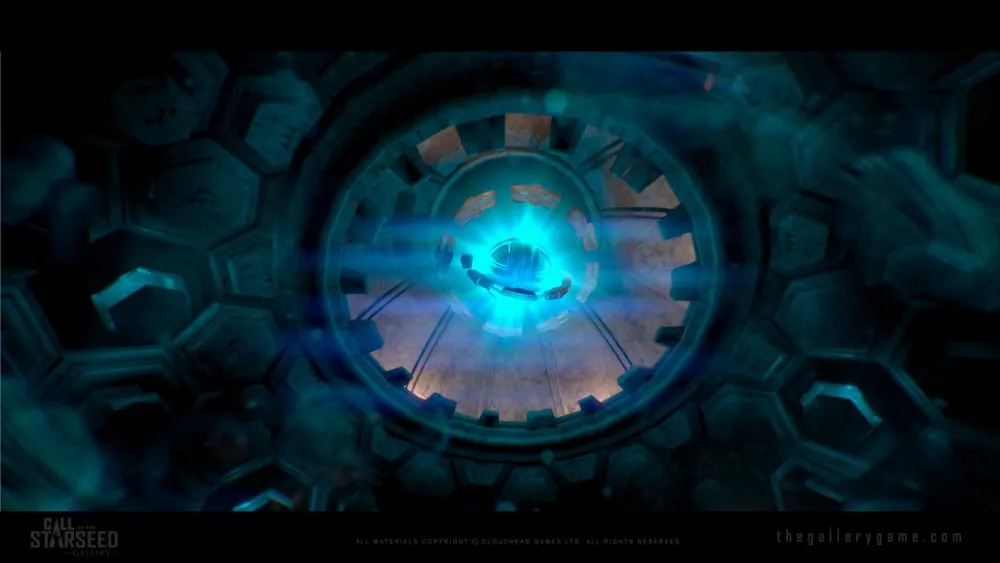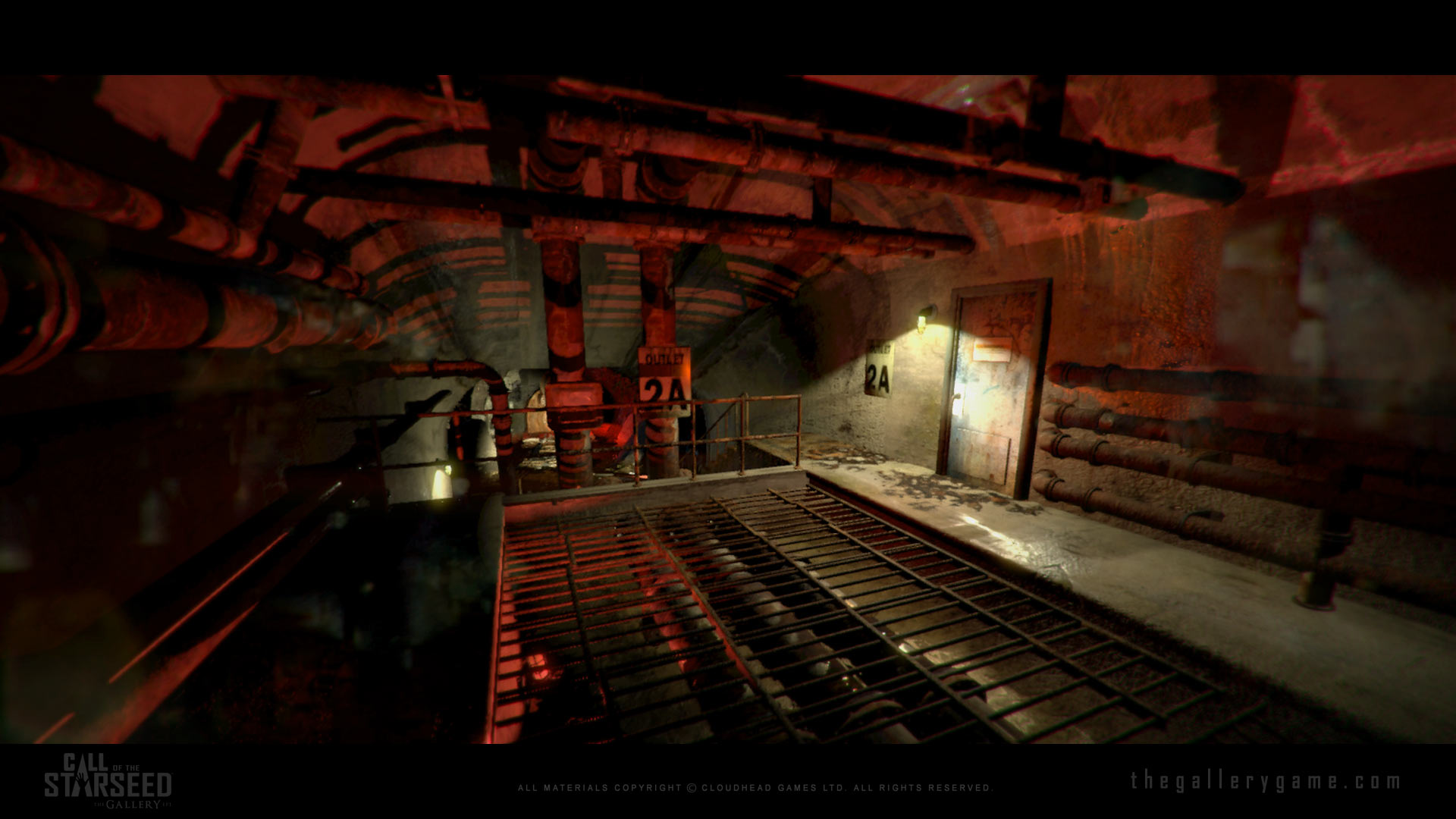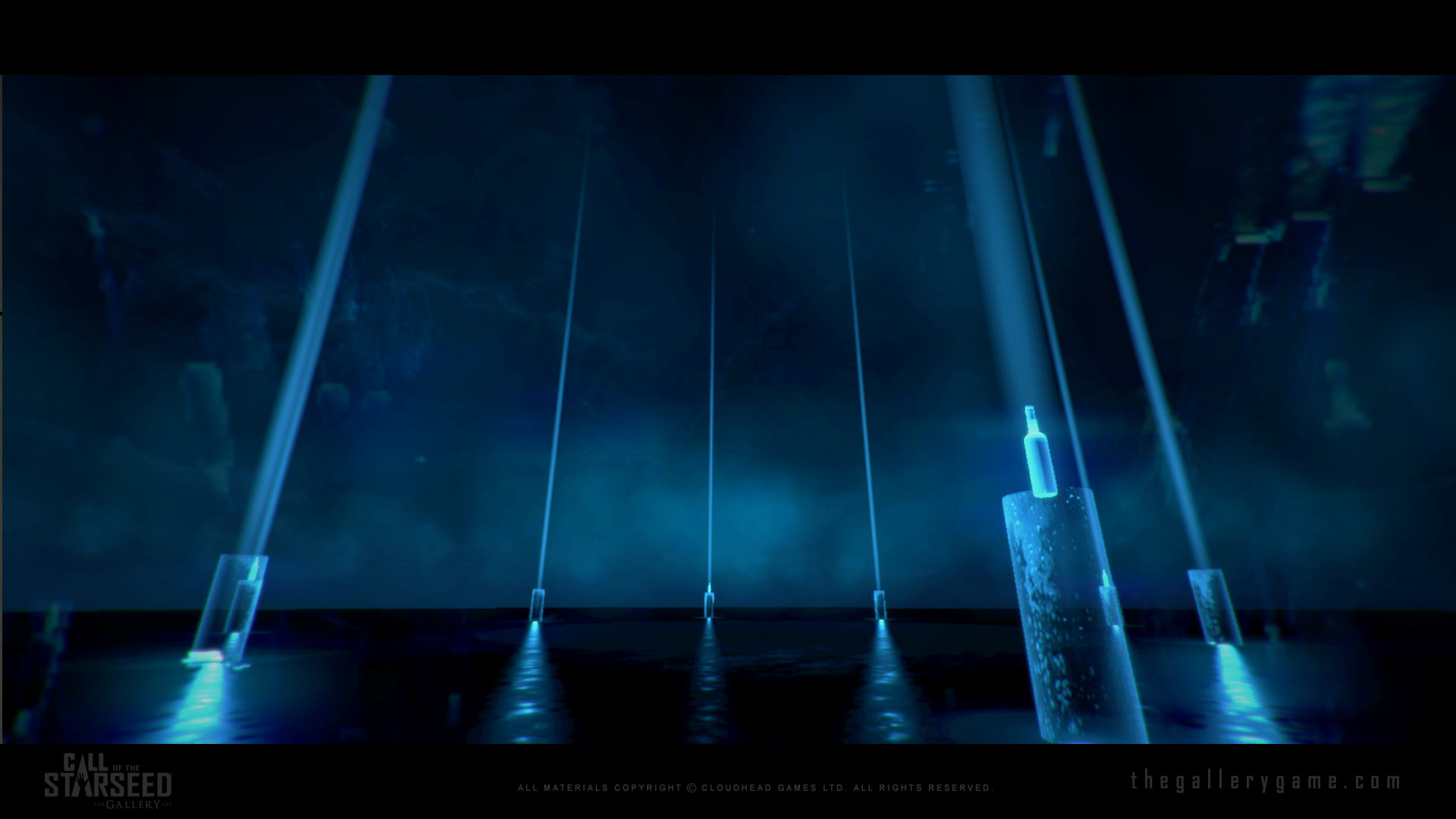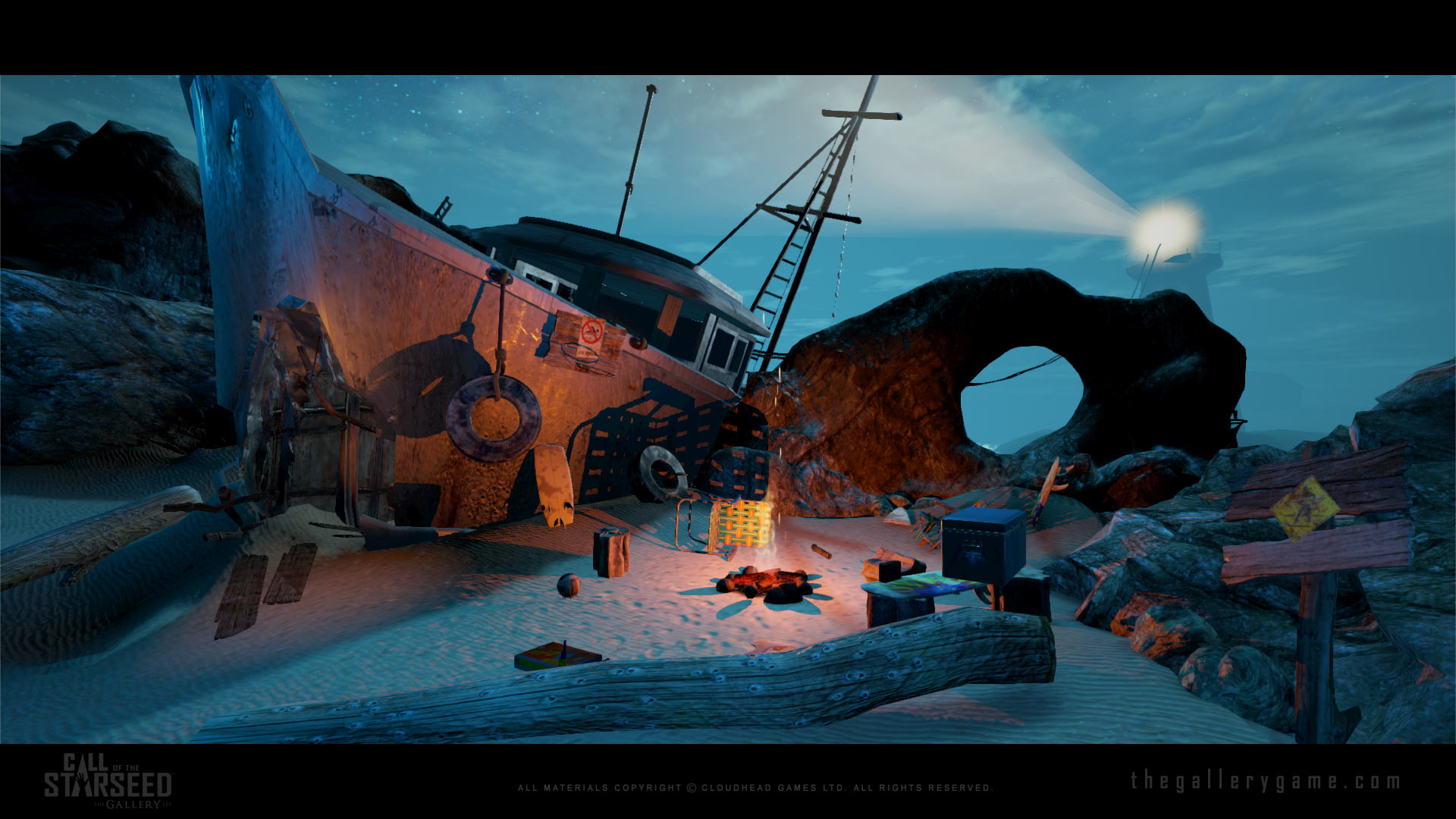After you’ve been playing and critiquing games for a while, you start to get a bit jaded. You start to recognize a lot of the little tropes and tricks that developers use to try and catch an audience by surprise. Plot twists, good guys turning bad, and the whole slew of other seemingly “unexpected” devices all start to taste the same when you’re force fed them all enough.
The same goes for being shocked and awed by pretty visuals – we’re reaching that uncanny valley level of realism in traditional TV-based gaming on standard PCs and consoles, so the bar is raised higher than ever for something to really impress me anymore. Then I played The Gallery: Episode 1 – The Call of the Starseed and watched the credits roll with my mouth wide open.
First, let’s back up a bit. The Gallery: The Call of the Starseed is a slow-paced, narrative-driven, adventure/puzzle game for the HTC Vive and Oculus Rift with Touch. You’ll take on the role of Alex, a young person searching an island for what happened to his/her sister. In The Call of the Starseed, Alex is whatever gender you want. While the first episode of this journey only lasted approximately 2 hours for me, by the end I was literally awe struck standing in the middle of my living room, mouth agape, desperately wishing for more.
What Cloudhead Games have accomplished here is such a rare and delightful balance between a mysterious narrative and a world ripe for discovery and exploration that it’s truly difficult to really describe. I have no qualms with saying that The Gallery: Call of Starseed may very well be one of the, if not the, most polished VR game I’ve ever played.
The episode’s final act is punctuated with some of the most spine-tingling moments I’ve ever had in VR.
Part of that is surely due to the fact that it’s a short piece of an otherwise much larger puzzle, but it’s also been in development for quite some time specifically with VR in mind. From the opening moments of the game – where you’re immediately thrust into an intuitive and incredibly well-made tutorial – to the game’s final moments that have you staring at the sky in sheer awe, Call of the Starseed is full of surprises.
One of the most delightful discoveries is the utter brilliance of the voice acting on display here. The female voice that guides you through the opening moments and narrates several of the cassette tapes you find scattered about is simply entrancing to listen to without moving or doing anything else. The episode’s final act is punctuated with some of the most spine-tingling moments I’ve ever had in VR due to the expertly voiced lines and reverberating 3D spacial audio. Whipping your head around in terror as someone descends upon you from what can only be described as a terrifying doorway to what looks like hell is an incredibly tense way to spend an evening.
One great but often overlooked feature of the HTC Vive and Oculus Touch motion controllers is how sensitive the triggers are. If I squeeze my finger down slowly on either, my fingers in the game will slowly move down as well. Once I reach the bottom of the trigger, I can click it down one notch further, which defines my hand in the game into a fully-clenched fist. The Vive wands felt more natural in my hand for holding objects, such as bottles or signal flares, given their shape and weight, while the Touch controllers felt like a natural extension of my hand, granting a more believable sense of hand presence. Either platform plays great when you have an optimal 360-degree tracking setup.
It’s all of the small touches like that with VR experiences that really make this game stand above the rest.
There is a tactful balance between puzzle-solving and exploration.
There was also not a single moment of combat throughout the entire episode. The closest I came to a violent confrontation with someone or something is when I was mistaken for someone else and shot at, but I wasn’t ever in any actual danger.
Movement is handled via Cloudhead’s much-touted “Blink” system. It works by you holding down the track pad in your left hand, then aiming the icon on the ground using head-tracking. You can swipe your thumb to re-position which direction you’re facing, then release to teleport to that spot. If you’re watching someone play, it can look a little jarring since there is so much blinking and switching happening on-screen, but when you’re in VR, it actually feels very natural and easy.
The Gallery: The Call of Starseed may very well be one of the, if not the, most polished VR game I’ve ever played.
There is a tactful balance between puzzle-solving and exploration. That balance is so perfect, in fact, that it’s at the core of what makes Call of the Starseed work so well. The beauty of shorter narrative games like this is that they’re devoid of any unnecessary padding or frustrating portions that expand the game for unnecessary reasons. Just as a puzzles was starting to wear on my patience enough to be frustrating, I’d figure it out and move on to the next area, albeit often very slowly.
The Gallery is a world that doesn’t force you to poke around and take your time, instead it begs you to. I never felt like hints or clues were too difficult to discover or that puzzles were designed in weird and obtuse ways, but rather, that I found solutions organically in my environment while playing and never felt like I was going too far out of my way to do so. All too often the answer to a problem in others games will be in a bookshelf on a forgotten floor behind a hidden candlestick or something equally as ridiculous, but not here. Everything feels natural and expertly paced.
I’m absolutely dying to dive back in.
Unfortunately I’m not able to go into any more specifics about what happens or what you’ll be doing exactly at the risk of spoiling things for you. Not because there are any revolutionary or profound moments or because there are huge plot twists that you won’t see coming. No, there’s no cheap tricks here. Once you’ve finished playing The Gallery: Call of the Starseed, you’ll see exactly what I mean.
Update: Since its original HTC Vive release, Call of the Starseed has also launched on the Oculus Rift with Touch controllers. Since the game does encourage movement and exploration, we recommend playing it with one of the experimental 360-degree sensor setup configurations, preferably three cameras. Playing with two front-facing cameras will not result in a comparable experience and using the full compliment of at least three is greatly preferable over even just two in a 360-degree arrangement. With the proper setup, it works great. This is still one of the best adventures found in a VR headset.
The Gallery: Call of the Starseed is a short game, there’s no denying that. And just as things really start to pick up the pace, after the incredibly immersive and engaging cutscene that really opens the door for a whole galaxy of possible plot developments, it’s over. But those precious 2 hours you spend inside the game are some of the best you’ll find in VR on any platform. With The Gallery, Cloudhead uses simple, old-fashioned, awe-inducing beauty and immersion that hooks you instead of any cheap tricks or gimmicks and I’m absolutely dying to dive back in.
Read our Game Review Guidelines for more information on how we arrived at this score.





























